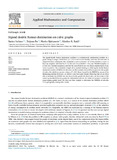Adobe PDF
(911.97 kB)
Signed double Roman domination on cubic graphs
Page view(s)
108
checked on Jan 13, 2025
Download(s)
38
checked on Jan 13, 2025


 CC BY 4.0
CC BY 4.0
